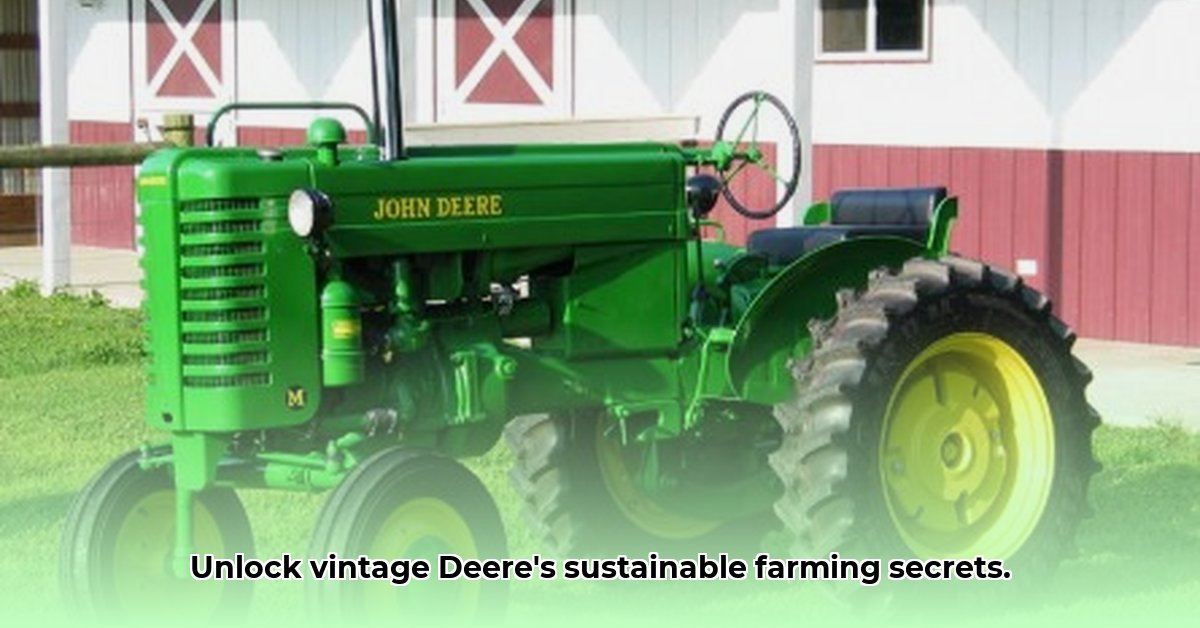
Old John Deere Tractor Photos: A Glimpse into Sustainable Farming's Roots
Looking at old photographs of John Deere tractors isn't merely about appreciating weathered metal; it's about understanding the evolution of farming practices and the surprising parallels between traditional methods and modern sustainable agriculture. These images narrate a story of ingenuity, resilience, and a profound connection to the land—a connection many feel is absent in today's large-scale farming. How did the farming practices depicted in these photos contribute to the sustainability movement of today? This is a fascinating question that warrants further exploration. For more vintage Deere tractors, check out these toy tractor models.
The Workhorses of a Bygone Era
Imagine a farming world devoid of GPS-guided tractors, self-driving harvesters, and drone-based crop monitoring. That's the reality depicted in these vintage John Deere photographs. These robust machines, powerful for their time, formed the backbone of farming for generations. Their sturdy frames and powerful engines demanded skill, patience, and a deep understanding of the land from their operators. These photos showcase farmers intimately involved with their equipment—a connection often lost in today's automated farming. They weren't merely operating machines; they were integral parts of a system, working in harmony with nature's rhythms. Isn't it remarkable how much human-machine interaction there was compared to modern agriculture?
Smaller Farms, Smarter Practices?
Many of these historical photos depict smaller, frequently family-run farms. The scale itself suggests a different approach to farming. The inherent limitations of smaller landholdings likely encouraged more sustainable practices. Wasteful practices were unaffordable; every resource held immense value. Farmers possessed intimate knowledge of their land, understanding its strengths and weaknesses. They likely employed crop rotation, fallow periods, and other techniques to maintain soil fertility without excessive reliance on chemical fertilizers. This mindful approach to resource management is now a central tenet of modern sustainable agriculture. These photographs serve as potent visual reminders that sustainable farming isn't a new concept. Did the smaller scale automatically result in more sustainable practices, a question worth considering for today's large-scale farms?
Tending the Earth: A Journey Through Soil Management
These old photos, when examined alongside historical records, offer insights into evolving soil management practices. While early methods weren't always environmentally friendly by today's standards, resourcefulness was paramount. Farmers adapted their strategies based on experience and necessity, developing practical techniques to sustain soil health. The shift towards no-till farming in modern agriculture mirrors similar pragmatic adjustments made by farmers decades ago to protect soil fertility. The objective—healthy soil—remained constant, although methods and technology have dramatically evolved. Could we learn from their ingenuity and persistence in today's agricultural practices? The answer holds significant implications for future farming methods.
Water: The Precious Resource Then and Now
Analyzing these John Deere photos in conjunction with accounts of past irrigation practices reveals another compelling narrative. While early irrigation systems may appear rudimentary compared to today's advanced technologies, the core principle—water conservation—remained crucial. These farmers faced significant water management challenges. The photos, while lacking precise details, subtly hint at the resourcefulness employed to maximize water resources. This resourcefulness, combined with the necessity of water efficiency on smaller farms, offers a valuable lesson as modern farming grapples with increasing water scarcity. How can we incorporate this old-world frugality into our current water management strategies?
The Human Touch: A Connection to the Land
The human element is what truly brings these old John Deere tractor photos to life. They capture the grit, determination, and quiet dignity of farmers deeply connected to their land. They depict the effort, pride, and undeniable bond between humanity and nature. This level of personal investment and connection to the land is often considered missing from large-scale, modern agriculture. These photos are a testament to the hands-on nature of farming in a past era, underscoring the importance of the human touch in creating a truly sustainable farming system. This strong connection, does it translate effectively into the sustainable methods of today?
Bridging the Past and the Present: Modern Sustainable Practices
Modern sustainable agriculture pursues several key objectives:
- Minimizing Chemical Use: Reducing reliance on pesticides and fertilizers protects soil health and the environment.
- Boosting Soil Health: Practices like no-till farming and cover crops enhance soil productivity and resilience.
- Conserving Water: Precision irrigation technologies optimize water use and reduce waste.
- Embracing Renewable Energy: Farms are increasingly adopting renewable energy sources to lower their environmental impact.
These goals, while seemingly modern, echo the resourcefulness and sustainability inherent in older farming practices. The core values haven't changed, only the technological application. This underscores the timeless quality of sustainable practices.
The Legacy Continues
Old John Deere tractor photos offer more than nostalgia; they serve as a reminder of agricultural ingenuity and the powerful connection between people and the land. They showcase the resourcefulness and sustainability embedded in farming's history. As we face the challenges of sustainably feeding a growing population, these images encourage us to learn from the past, innovate for the present, and build a better agricultural future. The lessons from these old photos can help us further refine and explore sustainable farming techniques. The past informs the future, and that future is sustainable.